
Bible, History, Archaeology
Bible,
History,
Archaeology
The end of the two kingdoms
du Nord (Samaria) and South (Judah)
Contents:
The end of the northern kingdom – A bas-relief showing Assyrian soldiers collecting the heads of defeated men – The end of the southern kingdom – The reign of Hezekiah – the siege of Lakish – The reigns of Manasseh and Amon – The reign of Josiah – The capture of Jerusalem and the end of the kingdom
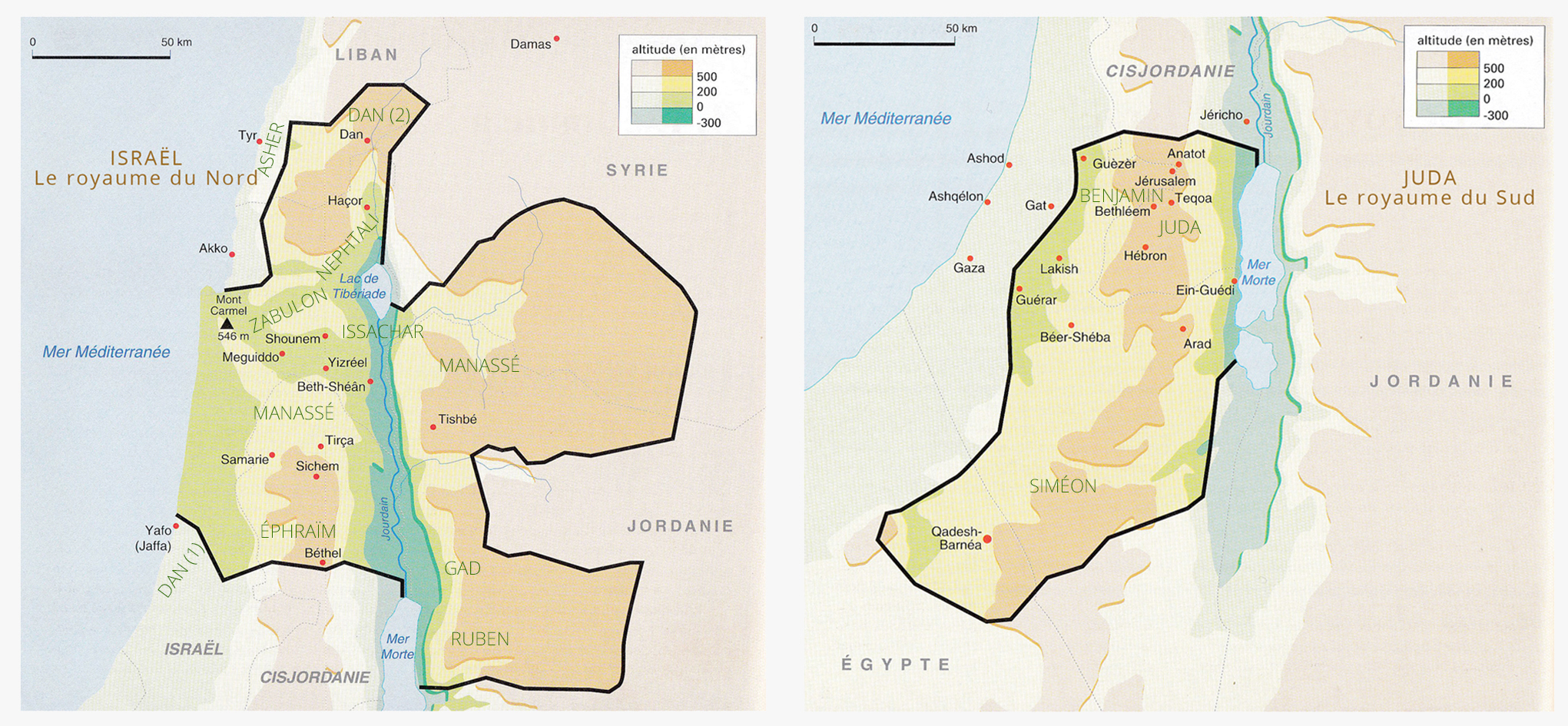
Map of the two kingdoms, North (Samaria) and South (Judah). © archeobiblion.fr
The end of the northern kingdom (Israel) in 722/721 B.C.
Between 740 BC and 730 BC, Egypt lacked the means to intervene in Canaan, while Assyria began its great expansion with Teglath-Phalasar III (-745-727). At the same time, the northern kingdom was sinking into anarchy: Jeroboam II had just died (743) and, in the space of ten years, five kings succeeded one another in Samaria (cf. 2 Kings 15,8-31), plunging the country into civil war. There was no question of resisting Assyria: Menahem paid tribute in 738 BC, as noted in the Bible (2 Kings 15, 19-20 and the Annals Assyrian).
For a better understanding :
You can consult the chronological table of the kings of the Northern and Southern kingdoms →
Together with Damascus and other small states in the region, Pekah formed a coalition against Assyria, in which he also wanted to involve Ahaz, king of Judah. When Ahaz refused, Damascus and Israel marched against Jerusalem (cf. 2. Kings 16, 5 ; Isaiah 7-8). To resist his enemies, Ahaz then called on Teglath-Phalasar (2 Kings 16, 7-9) despite the advice of the prophet Isaiah (or Isaiah).
Image opposite: illustration of an Assyrian infantry warrior, with spear and shield, part of an Assyrian army attacking the walls of an ancient Egyptian city, rendered 3d. Oliver Denker 1776060917.
The king of Assyria came and took Damascus (-732) and a number of cities in Galilee (2 Kings 15,29) and would probably have destroyed the entire northern kingdom had Pekah not been assassinated by Hosea (2 Kings 15.30), who immediately surrenders and pays tribute (2 Kings 17.3; and Annals Assyrian).
 Image opposite: a representation of Teglath-Phalasar III © Théo Truschel.
Image opposite: a representation of Teglath-Phalasar III © Théo Truschel.
But on the death of Teglath-Phalasar III (727), Hosea revolted and refused to pay tribute (2 Kings 17,1-4), thinking he could count on Egypt's help, in vain. Salmanasar V attacked, and despite Hosea's surrender (724), occupied the country. Samaria held out for two years, but in 722/721 the city was taken and its inhabitants deported (2 Kings 17.5), while populations from other regions of the Assyrian Empire were settled; mixed with the survivors of the northern kingdom, they would become the future « Samaritans »(cf. 2 Kings 17,24).
To discover the History of the Samaritans →
Archaeology shows that several Israelite towns were reduced in size or even abandoned, leading to the conclusion that there was a sharp decline in population. In Judah, on the other hand, demographic growth was observed at the same time, attributed to the influx of refugees.
Assyrian soldiers collecting booty and heads of the defeated. North Palace of Nineveh. © Théo Truschel.
 The end of the southern kingdom (Judah) in 587 BC
The end of the southern kingdom (Judah) in 587 BC
By refusing to join the anti-Assyrian coalition (2 Kings 16.7) and its call to Teglath-Phalasar, Ahaz had momentarily ensured Judah's survival, but he was now a vassal of Assyria with all the consequences that entailed (cf. 2 Kings 16, 7-18).
Image opposite: a representation of King Sargon II © Museo di Torino.
For a century and a half or so, the kingdom of Judah would therefore subsist, and it would try, if need be, to take advantage of Assyria's moments of weakness to regain a certain autonomy. But for the time being, Sargon II (-722/1-705) continued his father's policy and consolidated his position on the Mediterranean coast. In 720 BC, he defeated the Egyptians and their Philistine allies at Rafah.
In Judah, two kings were to make history and give the kingdom its last years of freedom and greatness: Hezekiah and Josiah.
The reign of Hezekiah
Hezekiah (2 Kings 18,1) succeeded Ahaz in 715 BC. Cautiously, he concentrated his efforts on the religious and moral renewal of Judah. Thanks to his loyalty to Yahweh and his uncompromising nationalism, he hoped to win over the Israelites from the north who had remained in the country, as well as those who had taken refuge in Judea. In Hezekiah's time, as a sign of this development, Jerusalem acquired a new quarter on the western hill, and the traditions of the north came into conflict with those of Judah.
 Image opposite: a personal seal of King Hezekiah © Israel Museum, Jerusalem.
Image opposite: a personal seal of King Hezekiah © Israel Museum, Jerusalem.
See the scientific study of the Hezekiah seal →
On the death of Sargon II (705), Assyria experienced the usual succession troubles, and the situation seemed particularly favorable for the subjugated states to try to regain their freedom. Merodach-Baladan - who had been defeated by Sargon II - once again seized the throne of Babylon and sent ambassadors to Hezekiah (2 Kings 20,12-19), no doubt as an invitation to shake off the Assyrian yoke.
In fact, Hezekiah took an active part in the revolt that spread along the Mediterranean coast (2 Kings 18, 7-8). It is also preparing to suffer the consequences of this policy by strengthening Jerusalem (cf. Isaiah 22, 10) and by securing the water supply through the Siloé canal (2 Kings 20, 20 and the text of the inscription found in 1880) (see below).
See the page dedicated to the scientific study of the Hezekiah Tunnel →
Sennacherib successively confronted those who had rebelled against his power. He re-established order in Babylonia (702 BC), then intervened in the Levant (701 BC), where he struck hard, destroying several cities, including Lachish, Judah's most powerful fortress after Jerusalem. Hezekiah, whom the prophet Isaiah had urged to resist, finally obtained the Assyrians' departure only at the price of exorbitant concessions: payment of an enormous tribute - 30 talents of gold and 800 talents of silver - not to mention the deportation of his sons, his harem and his musicians, as well as the loss of part of his territory. According to the Bible, the story also ends in disaster for the Assyrian army: Yahweh's angel killed 185,000 Assyrians, and Sennacherib returned to Nineveh, where he died shortly afterwards, murdered by his sons.
The siege of Lachish, which took place in 701BC, pitted the Assyrian army commanded by Sennacherib against the kingdom of Judah. The Assyrians were victorious, and the inhabitants of Lachish were massacred or deported. This victory is engraved in a bas-relief that adorned the walls of Sennacherib's palace in Nineveh. These bas-reliefs are now on display at the British Museum in London. © Théo Truschel.
The reigns of Manasseh and Amon
The reign of Manasseh (-697-642), the longest of the biblical reigns, is presented as the worst thing that could happen in Judah. Manasseh's religious measures can be explained by opposition to Hezekiah's reform, perhaps under popular pressure; at least in the beginning, they can hardly be attributed to Manasseh, who was 12 years old at the time of his accession. Amon (642-640 BC) succeeded Manasseh, but was assassinated after two years of reign (cf. 2. Kings 21, 19).
The reign of Josiah
Josiah (-640-609) was the last king to mark this period in Israel's history: still a child (8 years old) when he was appointed king - which left the party that had put him in place free to resume the policy of’Hezekiah - Josiah was able to take advantage of the end of the Assyrian kingdom. Indeed, from 650 BC onwards, the Assyrian empire was rapidly disintegrating.

Image opposite: illustration of two soldiers of the Assyrian army, an infantryman and an archer. Sammy33. 1567849510.
But the decline of Assyria (Assur was destroyed in 614 BC, Nineveh in 612 BC) did not mean a return to freedom for the small states along the Mediterranean coast: Babylon quickly took over in Mesopotamia and wanted to seize Harran, where Assyrian power had retreated. Egypt, aware of the danger posed by a new great Mesopotamian power, came to Assyria's aid.
It was during this campaign by Pharaoh Nekao II that Josiah lost his life at Megiddo (609 BC). Was he assassinated because he was sympathetic to the Babylonians, as 2 Kings 23, 29? Or was he killed in battle while opposing the Pharaoh? In any case, there were only two great powers left at the time: Egypt and Babylon, and Judah passed, for a short time (609-605 BC), under Egyptian control (2 Kings 23, 31) before becoming Babylon's vassal (2 Kings 24, 1).
 The capture of Jerusalem and the end of the kingdom
The capture of Jerusalem and the end of the kingdom
In fact, after the victory over the Egyptians at Karkemish (May/June 605 BC), Nebuchadnezzar II subdues all of Syria-Palestine, and Jehoiakim must pay him tribute (cf. 2 Kings 24, 1). An attempted revolt in 601BC had disastrous consequences (2 Kings 24, 2-4); in 598 BC, Jehoiakim died (or was he assassinated? cf. Jérémie 22, 19; 36, 30); his son Jojakin may yet succeed him, but only for three months. In 598/7, Nebuchadnezzar II takes Jerusalem, deposes Jehoiachin and establishes Zedekiah as king (2 Kings 24, 17). He deports part of the population (the first «selective» deportation) (2 Kings 24, 10-17).
Image opposite: a cylinder from Nebuchadnezzar II reporting the construction of a temple. Israel Museum, Jerusalem.
Instigated by Egypt, the revolt resumed in Palestine from 594-587 BC. A new campaign by Nebuchadnezzar II, Despite Egyptian intervention, Jerusalem was taken on July 29, 587 BC. Zedekiah, who had fled, was caught on the plains of Jericho and brought before Nebuchadnezzar II (2 Kings 25, 4-7). His sons are killed before his eyes are gouged out. Zedekiah is deported to Babylon, where he dies in prison.
The city of Jerusalem was destroyed, the Temple plundered and burned to the ground, and a second deportation hit Jerusalem (2 Kings 25, 1).
 Image opposite: a 3D reconstruction of Solomon's Temple © Théo Truschel.
Image opposite: a 3D reconstruction of Solomon's Temple © Théo Truschel.
See the article dedicated to Temples in the Bible →
Judea then became a Babylonian province: instead of Zedekiah, Nebuchadnezzar II installs Godolias at the head of those remaining in the country, but he is soon assassinated (2 Kings 25, 22-26). A third deportation (in -582) is mentioned in Jérémie 52, 30. Henceforth, the province of Judah is abolished and its territory is attached to the province of Samaria.
Jeremiah witnessed this tragic period in his people's history, and chapters 26 to 45 of Jérémie are particularly rich in historical data.

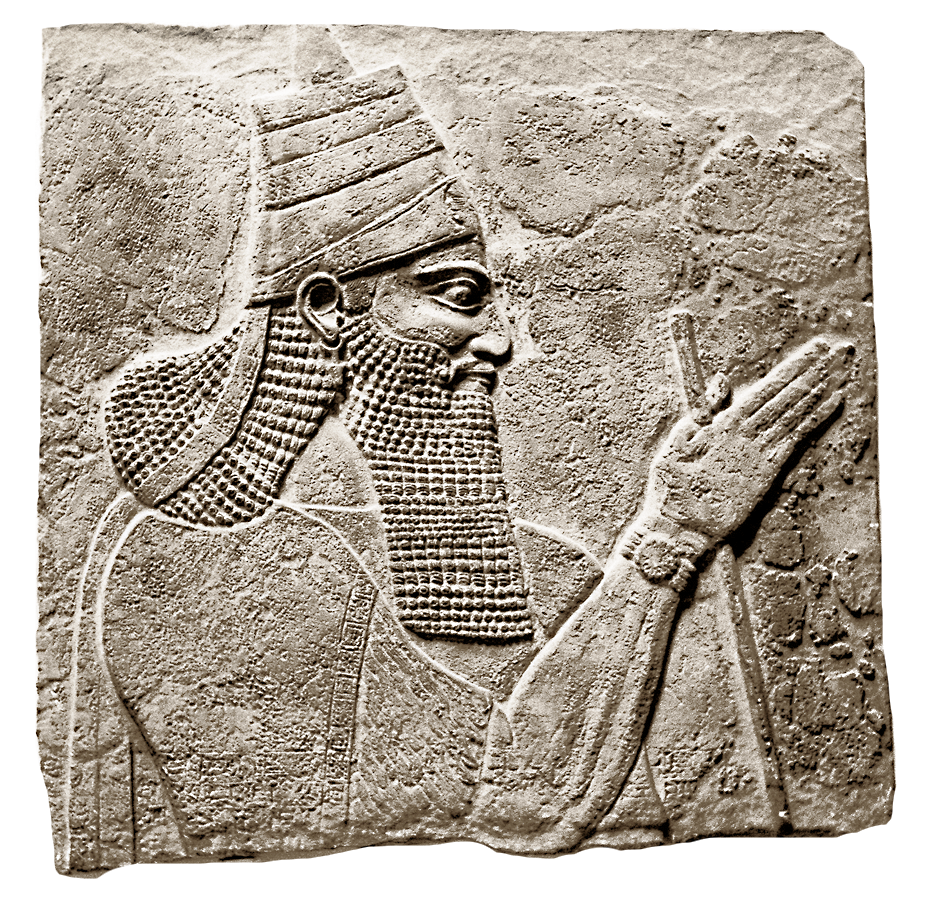
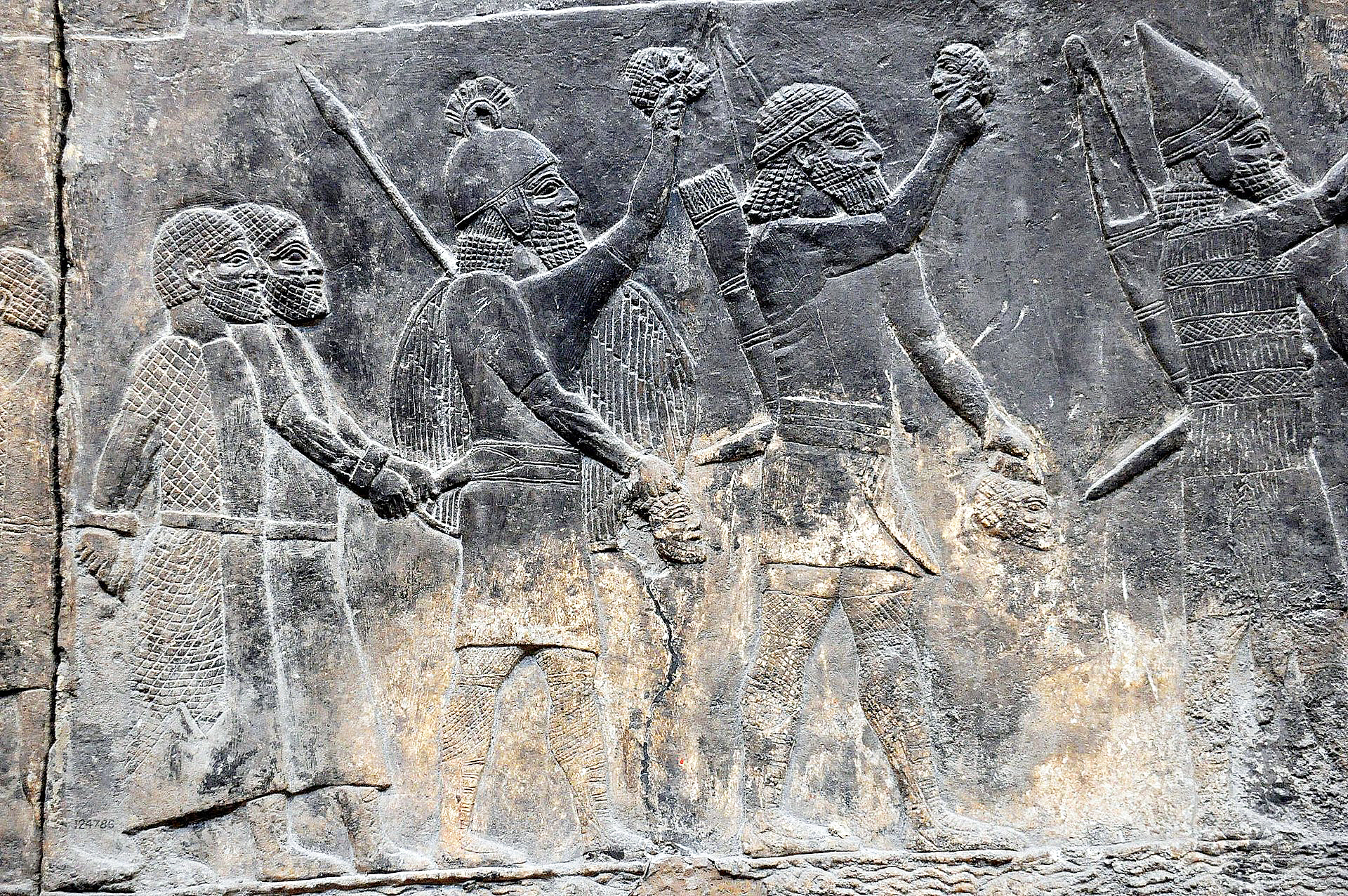
 The end of the southern kingdom (Judah) in 587 BC
The end of the southern kingdom (Judah) in 587 BC Image opposite: a personal seal of King Hezekiah © Israel Museum, Jerusalem.
Image opposite: a personal seal of King Hezekiah © Israel Museum, Jerusalem.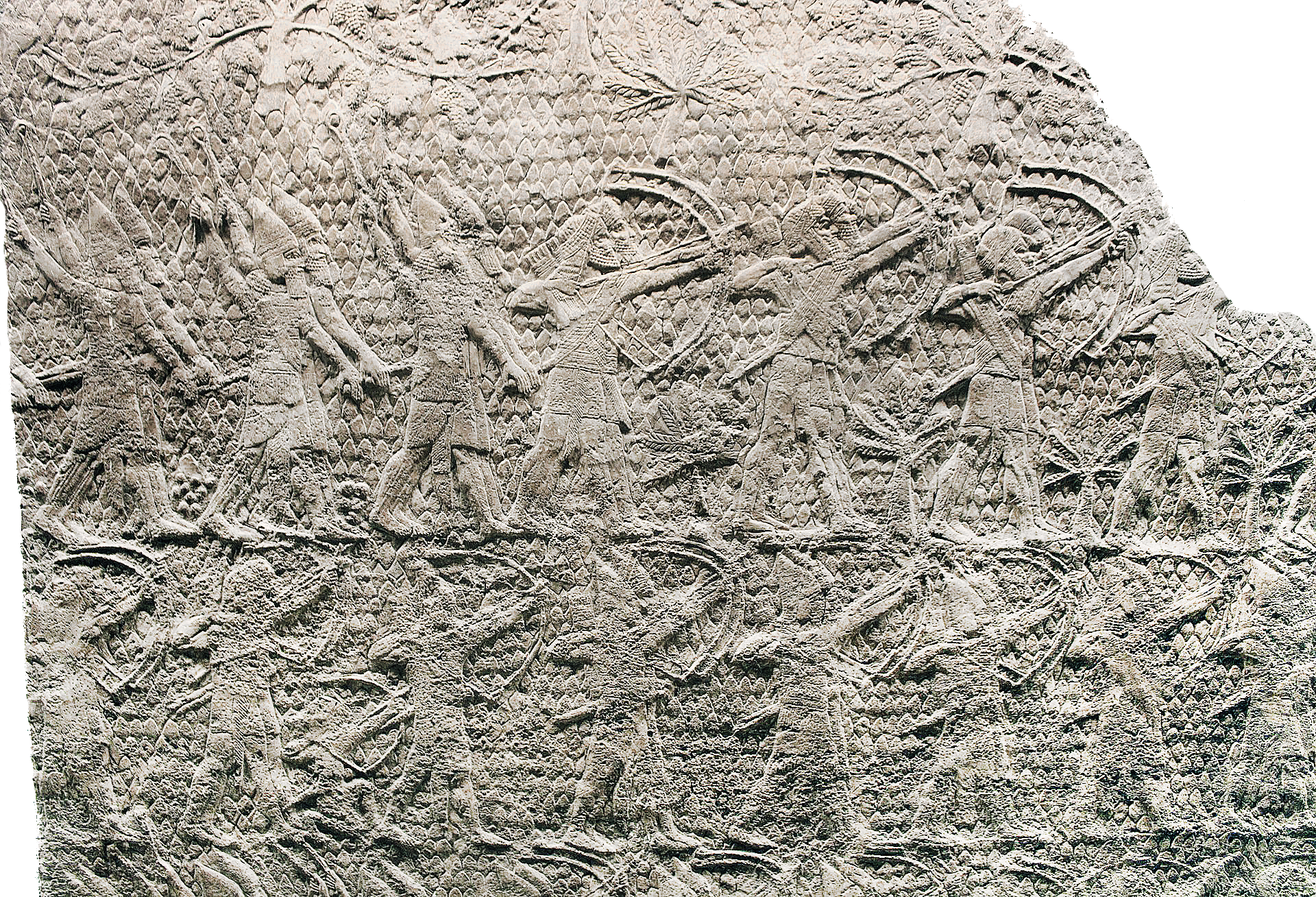
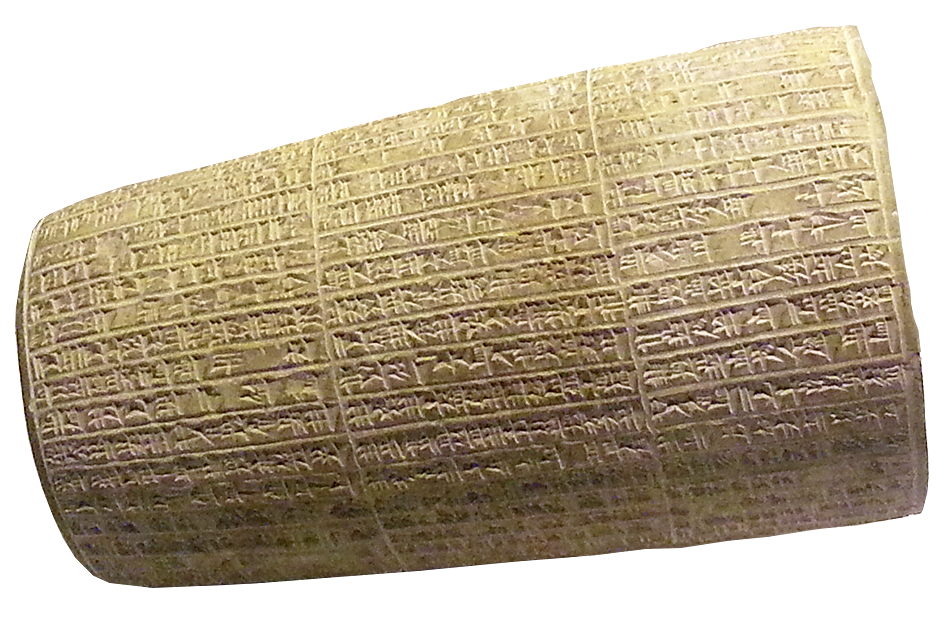 The capture of Jerusalem and the end of the kingdom
The capture of Jerusalem and the end of the kingdom